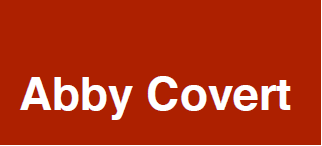Draw Your Mess
This worksheet (PDF) is the closing exercise in Chapter 1 of How to Make Sense of Any Mess.
This framework is not the easy button, in fact it is the difficult button if you take it seriously. It is my prompt for you to take the space and time needed to do a kind of confrontation with whatever the mess is that you are facing.
“A humble warning sensemakers — there is no magic in this framework. If it is magic you seek, look elsewhere. If it is clarity you seek, proceed.”
Draw what your mess looks like to you?
- What are the pieces of this thing?
- What are the connections between those things?
- What are tenuous connections vs. strong?
- What are clear bits vs. messy bits of the whole?
- How big is it in scale?
What words would users and stakeholders use to describe your mess?
- How is this mess described by others?
- What are the clues you can discern from the language used in this space?
- What are the various levels of understanding from different types of stakeholders?
Why is this important?
Often the messes feel bigger when they are trapped in our head alone. When we start to make the space and time for them to be seen in the light of day we can confront them for what they really are. Even better when we are working with teams we can point at parts of the mess and get more specific about what we see. Or we can invite them to draw their version of the mess and compare pictures. Think about the collaborative potential that could unlock?
When to use this…
- At the beginning when it feels too big to wrap your head around
- In the middle when you start to worry that you don’t have all the bits wrangled
- At the end when you want to make sure you can describe the result of the effort clearly to a variety of audiences
Level Ups, Bonus Points, Brownie Points, Nerd Snipes
- Make it BIG! This PDF was intended to make this activity small enough to be applicable to any size mess. But if your mess is BIG, make a BIG version of this. Take up a whole room if you need to. I once took over a war room in Portland on Nike campus for 3 months with a map so big it needed the space and commitment of working through over time. It was a mess. And it was a needed confrontation for our team
- Compare with partners! This exercise is really about the mess through the lens of the sensemaker, so if you are sharing the sensemaking with someone else, have them also do this exercise and then compare and contrast your results. Then redraw a version that represents you as a pair, do that with more and more people and youre growing consensus on the problem with the group.
